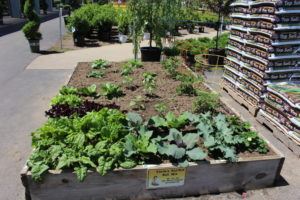Making It Matter
While starting a blog may take only a few minutes, maintaining your garden center’s blog takes dedication and professional content to keep your customers returning for more.
People are asking how Mahoney’s Garden Centers came to launch their attention-getting blog last summer and the answer is no surprise they were responding to the same advice you’re all hearing about the value of social marketing. You know that customers are getting their information online, that social marketing is far cheaper than print advertising, and that it’s time to get on board.
Writing for the Web
It’s deceptively easy to start a new blog online it just takes a few minutes. But for a blog to be successful, the blogger needs to know a shocking number of details about writing for the Web, building traffic and even online etiquette. Because Mahoney’s didn’t have a staff member with experience in all of that not to mention the time to do it they looked around, saw the blog articles I was writing for Homestead Gardens, and hired me to get their blog going.
As editor, my duties would include making the blog run on time with articles that inform and attract readers, and making sure they were edited, laid out and illustrated for the web, including the almighty search engines.
So what topics are covered on the blog? Lots of gardening how-to, always timely, science-based and environmentally responsible. Profiles of public gardens in the region and profiles of Mahoney’s employees, especially the ones who interact with customers. News of gardening and greening projects in the region. Book reviews. Corporate blogs succeed based on their useful and entertaining content, not their advertorials.
Indeed, advertising or marketing-type content is an instant turn-off to blog readers (your existing and potential customers), who usually click away from it and never return. Promotion needs to be infrequent and subtle, like profiling plants that you happen to sell. The preferable route would be to show them full-size and in a garden. And when it comes to profiles of employees and stories about in-store events, those are okay, too.
It’s in the Delivery
Blogs need the right tone. The best blogs are noncorporate, conversational and written by an identifiable person. Better yet, several identifiable people, and not just someone in the marketing department.
So Mahoney’s blog is a team effort. Contributors include not just me but a local radio garden guru, and as many employees as possible. (Employee articles can be simply e-mailed to the editor, who does the rest.)
And the regular “guest bloggers” include regionally known garden writers whose stories create buzz and get promoted via their own networking. Book authors typically contribute free blog stories and book giveaways to lucky readers. Local garden-related nonprofits provide free blog stories that help promote their good works, and then help spread the word through their e-newsletters. Avid customers offer their garden photos featuring plants bought at Mahoney’s.
Guest bloggers are great for making the blog go viral creating word of mouth on steroids. The networking goes on in the blog’s sidebar, too, where you’ll find links to regional public gardens, gardening groups, local garden bloggers, and more. These links provide a service to readers while helping to get Mahoney’s connected with the local online communities their customers are engaged with. When the Boston Globe’s garden writer praised the blog, she mentioned liking this feature in particular she clearly understands “link love” and why it’s important to use it.
Consistent Promotion
Besides high-quality content, the other requirement for a successful blog is promotion, and not just at launch but continuously via Facebook and Twitter, on signs in the store, and by linking to new blog stories in e-newsletters. When sales staff know about a new blog story that features plants in their department, they can mention it to customers. Blogs and other social marketing tools work best when they’re integrated with the company, not stand-alone products.
So, what’s the return on this investment? With good promotion, readership builds steadily and turn-out at events soon improves, but forget about exact ROIs. Social marketing is about becoming part of the online community and creating relationships things that can’t be quantified and don’t happen overnight. That’s hard to hear, I know, but take heart in the fact that social marketing is less expensive than traditional marketing, and more effective at building customer loyalty.
Yes, there’s tons of gardening information online these days, but sorting through the generic tips and junk websites to find trustworthy information is challenging. Web-using gardeners (soon to be ALL gardeners) already trust you and are grateful to find your expert, local help online. Facebook is great but no place for meaty information, inspirational garden stories or great photos of plants in gardens. You could put that great content on your static website, but blogs are updated frequently and designed to make it easy for readers to comment to communicate with you.














 Videos
Videos





